A Casual Discussion On Polaroid Manipulation With Heather Hollingdale

Photo Insider: Hello Heather, thank you for taking time to speak with us today
Heather: My pleasure, I love talking Polaroid
Photo Insider: So when did your love of Polaroid begin?
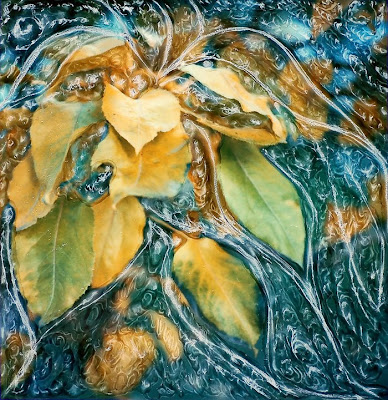 Heather: When I was 10 years old I really got into photography. I figured the coolest job in the world would be working for National Geographic as a photographer, eventually as I grew up I realized being right next to a wild tiger…. that could be bad. But I found out from looking into National Geographic that their photographers would use Polaroid film, because how else could you proof your work in remote areas back then?
Heather: When I was 10 years old I really got into photography. I figured the coolest job in the world would be working for National Geographic as a photographer, eventually as I grew up I realized being right next to a wild tiger…. that could be bad. But I found out from looking into National Geographic that their photographers would use Polaroid film, because how else could you proof your work in remote areas back then?
Photo Insider: There really was no other way to do it back then, no LCD’s, no guarantee that the exposure was right.
Heather: Like most people, I loved the instant results. There is really nothing like seeing the picture develop in front of you, and it’s amazing the quality that you can get from Polaroid. What's there in the moment when the shutter fires and becomes the print. There's only that one print, and there's no re-cropping or Photoshop touch-ups. It's so much more immediate and personal than other photographic mediums.
Photo Insider: Most people know about Polaroid, but do you think most are aware of all that you can do with Polaroid films?
Heather: Yes and no. There are a lot of online groups and forums now that are dedicated to Polaroid and some more specific to the manipulation process of Polaroid prints. I think Flickr has really brought an increase of awareness to Polaroid photography because you have people around the world being inspired and exchanging ideas and techniques.
Photo Insider: It is usually unheard of for a photographer to give away secrets so openly, especially now days.
Heather This is true, printing and exposure techniques might be "secrets" of the trade, but really, everyone has there own set of eyes. I can give you advice on technique, but it's not going to be my work in the end, it's always going to be yours. And especially with Polaroid manipulations - each print is so unique. It's not a filter or a Photoshop action; it's a very physical and tactile process. The end result is something you created. That can't be duplicated by telling somebody how it was done - it really is art.
Photo Insider: In browsing around on Flickr you can find many groups of loyal Polaroid users sharing images and information. Who still has this camera, using that camera, where can they buy film, plenty of discussions happening. But I have always enjoyed looking into the manipulation group’s cause as you said this is something really unlike anything else out there.
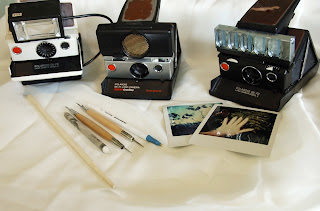 Heather: It's nice to talk to other people on Flickr and know that I am not the only crazy Polaroid fan left in the world. And it's inspiring to see what other photographers are doing with Polaroid films, now that we all know it's going to run out soon. Right now, I have about 10 different Polaroid cameras, each special in their own ways.
Heather: It's nice to talk to other people on Flickr and know that I am not the only crazy Polaroid fan left in the world. And it's inspiring to see what other photographers are doing with Polaroid films, now that we all know it's going to run out soon. Right now, I have about 10 different Polaroid cameras, each special in their own ways.
Photo Insider: 10 cameras? And you use them all?
Heather: I have actually used all of them, but there are 3 that I use consistently. The SX-70 model is my favorites - the optics are phenomenal and they provide more manual controls and image sharpness than the One-Steps. I have some of the 600 series cameras, a 104 Land camera, some flash bulbs... I guess I have a lot.
Photo Insider: Is the SX-70 your favorite also because of your preference to do the manipulations?
Heather: Yes. It's possible to shoot SX-70 film in 600 series cameras, too, but the original folding SX-70 cameras are real SLRs that give me more of control over framing and exposure, and they better quality optics. After all, this is integral film there are no digital touch-ups or re-crops.
Photo Insider: Actually if you could, explain to our readers on what Polaroid Manipulation is and how you got into it.
Heather: Polaroid Manipulation is quite simply manipulating the Polaroid print. After the print comes out of the camera, you have some time as it develops when the emulsion and the developer paste underneath are soft and manipulable. You can use a simple tool like a regular dried-up ballpoint pen and push the emulsion around, break it up, or push right down through the image to the black backing. Heating or cooling the print as it develops can affect it, too. I started doing Polaroid manipulations about 10 years ago, and liked working with SX-70 film the best, although I've also done image and emulsion lifts with Type 669 film, and I've experimented with Type 55 film. As I said before, I knew when I was young I wanted to be a photographer but I also was very into art. Turns out I can't draw or paint very well and in many ways I get do both with manipulations.
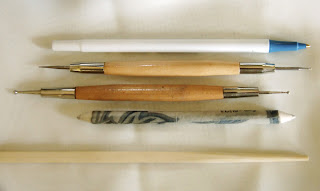 Photo Insider: Take us through the entire process, shooting to manipulation.
Photo Insider: Take us through the entire process, shooting to manipulation.
Heather: When your shooting with film it is completely different then digital. For digital photographers, it's shoot lots and see how it looks and shoot again, but with film that's one less shot in your camera, and for Polaroid shooters, everyone has been looking at film becoming less and less available. I try to be spontaneous about finding subjects, but I admit I'm careful with each Polaroid now and I think about how I want to manipulate it before I take each shot. I've had years of trial and error to learn what I can do and when to apply different tools to get the results I want. The exposure, when compared to the rest of the process, is the easiest part, however you still need to get it done right. This is this is your canvas, what you're building on. Once you click the shutter, time is ticking. Depending on the film and other factors you only have a limited amount of time to do certain manipulation techniques. And then you reach a point where it looks done and you're happy with it.
Photo Insider: For the manipulations, what are the factors that effect the time and also what are you using to do the manipulations?
Heather: When I do manipulations I use simple tools like a broken ballpoint pen, or leather-piercing tools, pencil erasers, smudge sticks, sometimes I even use heated knives and forks. And each of these tools can be used and some have different effects based on factors like the temperature of the film or the environment that it is in. And depending on those temperatures I might extend the time I can manipulate the chemistry, or change how the print can be manipulated. For the black backing of the print you really only have about 5-10 minutes from the time of exposure, after that you have maybe a few more minutes for etching the white developer paste, and then more time for stretching the emulsion and warping the image. If you don't wait long enough or you work the emulsion too much, you're just tearing up the image. You can do an SX-70 manipulation in 15 minutes, or work in different techniques over an hour or 2 as the emulsion sets up and hardens. 
Photo Insider: It sounds like this is the ultimate blend of art and science would you agree?
Heather: Certainly. I think people forget photography was originally a scientific process that grew into a medium for artists. And the art was there long before digital cameras. Lots of people see Polaroid manipulations and don't really think that you can do these kinds of things with an analog format. They think it's a digital effect, but I have yet to find a digital substitute for Polaroid manipulation and trust me, I have tried!
Photo Insider: Today is a digitally driven market, and photographers around the world are discovering some of the things like Polaroid film are being pushed aside for the next upgraded camera or memory card. How does film, and even Polaroid film survive in this technology driven market?
Heather: I think Edwin Land (the founder and inventor of Polaroid) would have wanted people to be looking for the best options that are out there. Yes, I would have to agree that the industry abandoned film and went digital. I shoot a lot of digital in addition to film. But even with technology where it is today, analog processes are being re-discovered or discovered for the first time by new photographers. I see many people are now getting into analog because it is so different than everything digital that is out there right now.
Photo Insider: Based on the growing numbers of forums and groups out there for Polaroid I would have to agree, many people are getting into Polaroid. However, you and I know that recently Polaroid officially closed the doors, they stopped producing the film and the last batches of the film are done.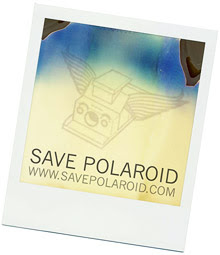
Heather: Right now there are plenty of groups on websites like Flickr, Polanoid, and other photography sites. People are clamoring for information or help on what to do. You can always store your film, not in the freezer though! I know people who think if they freeze their Polaroid film they will preserve the film but it just destroys the film or at least impairs the development process. Some people might like that effect, but it certainly isn't helping extended the expiration of the film.
Photo Insider: What’s the ideal storage for Polaroid film?
Heather: I got in touch with a technician at Polaroid, and straight from the horses mouth, the best way to store the film, is a cool and consistent temperature - cool but not frozen.
Photo Insider: For many Polaroid enthusiasts there was some great news the other day, news that might have included the technician you spoke with.
Heather: Oh yeah, definitely good news for Polaroid photographers.
Photo Insider: For those who don't know, Dave Bias who was the co-founder of www.savepolaroid.com announced the formation of two new Polaroid Corp.-related companies — PolaPremium and The Impossible Project. And "The Impossible Project" will begin manufacturing new Polaroid-compatible film beginning in 2010 and more importantly that company will be staffed by some of top technicians and developers from Polaroid.
Heather: I can't tell you how happy that news made me. For years, everyone has been sadly waiting for the day when Polaroid cameras become useless because you can't get film anymore for them, and these companies will actually be developing instant films that will be compatible to the older cameras like my SX-70's. It gives us all some hope, and knowing the staff from Polaroid are involved means you know your going to get the same quality and innovation that went into the old films, and maybe a new generation will get to see and shoot Polaroid.
Photo Insider: Do you think there are some young photographers out there today who have no clue about not just Polaroid but film in general?
Heather: Sometimes when I do portraits of children I use my film cameras, and they run up to look at the back of the camera and they see a plain black back with no LCD, and it confuses them. Kids have grown up with digital cameras. But if I'm shooting Polaroid, they get to watch the picture start to develop in front of them, and they get very excited. It's a good feeling to watch children discover the charm of Polaroids and to see a picture come to life in front of them.
Photo Insider: Makes me feel all warm inside knowing that a professional photographer is still using Polaroid in their studio, do you get requests for Polaroid or people are walking in and expecting digital and all that comes with it?
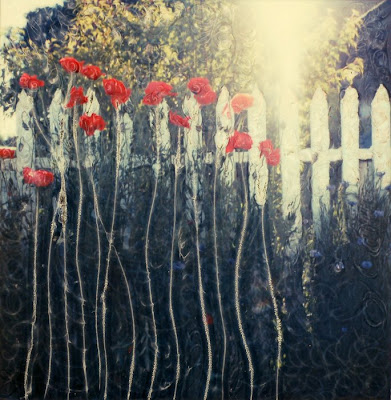 Heather: Everyone expects digital, that’s the world we live in now. I shoot digital for the guaranteed results and Polaroids to get something special. But I actually do a lot work with enlargements from the Polaroid. I keep getting requests for enlargements of Polaroid prints and when I print them as 10"x10", you really see all the swirls from the manipulation and all the details and colors stand out.
Heather: Everyone expects digital, that’s the world we live in now. I shoot digital for the guaranteed results and Polaroids to get something special. But I actually do a lot work with enlargements from the Polaroid. I keep getting requests for enlargements of Polaroid prints and when I print them as 10"x10", you really see all the swirls from the manipulation and all the details and colors stand out.
Photo Insider: It's really art for a lot of people, its not a file there is a lot of work that goes into these images from start to finish on your end, must be hard to give them away.
Heather: I am very attached to my Polaroid originals. I almost never give up the originals, but I don't like to sell them or give them away, except maybe to a friend. But people see it as they would any form of artwork and they appreciate the time and effort that went into it and for many people when they see my prints, especially the enlargements they are amazed that this was done with a Polaroid camera. It gets people interested - just the other day I had a 15 year old ask me where she could get film and a camera.
 Photo Insider: It's a rumored legend, that in the mid-1960's, one of Polaroid's research photographers inadvertently left a Polaroid negative face down on a counter top, later he picked it up and found that the image had transferred to the counter. After this along with some of his colleagues they began to play with the process and Edwin Land found out about this and sternly discouraged this "deviant" activity. Those researchers eventually kept playing with the process and it has expanded into the sub-culture of Polaroid manipulation that is out there today, do you think perhaps maybe the 15 year old who asked about the camera is going to perhaps pick up where you left off and maybe even find a new way to play with the old thing called film?
Photo Insider: It's a rumored legend, that in the mid-1960's, one of Polaroid's research photographers inadvertently left a Polaroid negative face down on a counter top, later he picked it up and found that the image had transferred to the counter. After this along with some of his colleagues they began to play with the process and Edwin Land found out about this and sternly discouraged this "deviant" activity. Those researchers eventually kept playing with the process and it has expanded into the sub-culture of Polaroid manipulation that is out there today, do you think perhaps maybe the 15 year old who asked about the camera is going to perhaps pick up where you left off and maybe even find a new way to play with the old thing called film?
Heathe r: Years ago, I taught photography workshops for school-aged kids. We would shoot Polaroid film, and do some basic manipulations and they loved it. It was always eye opening to see what kids chose to do with the manipulation process, lots of creativity, and no preconceived ideas about what the end result should be. Polaroids are very immediate, and therefore very personal. I think that personal connection means photographers will keep finding new things to do with the medium. And when you look at the basic things you need, anyone can try this at home. Polaroid camera, film, a few pointed sticks, and you're on your way.
Photo Insider: Any parting advice for Polaroid Manipulation enthusiasts reading this interview?
Heather: I'll go with one of my favorite Edwin Land quotes - "An essential aspect of creativity is not being afraid to fail." Shooting with instant film means capturing a moment, more than with any other kind of photography. Shoot what you love, push the limits, and have fun with it!
See more of Heather's work at http://atomicdaisy.com/ and her Polaroid manipulations on flickr http://www.flickr.com/photos/

